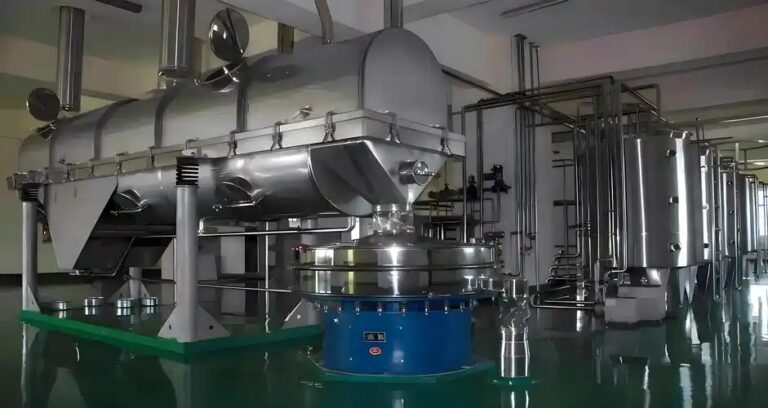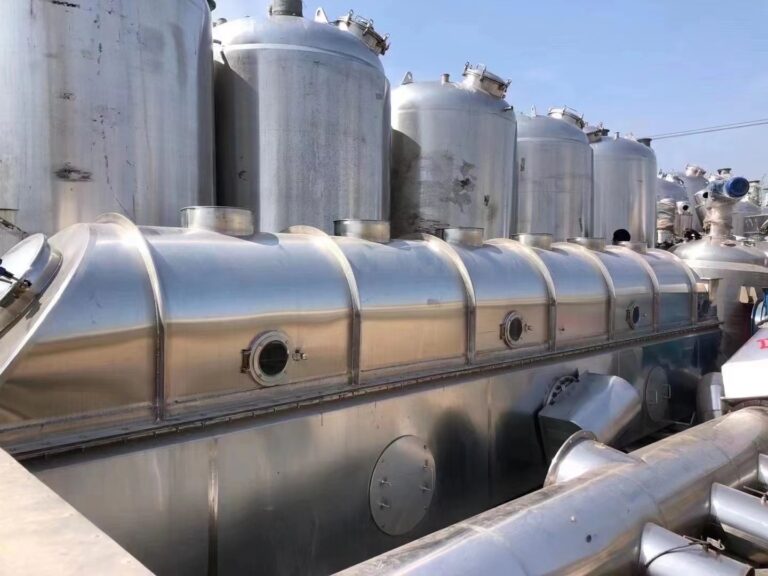Comment fonctionne un sèche-laisseur dans des applications industrielles
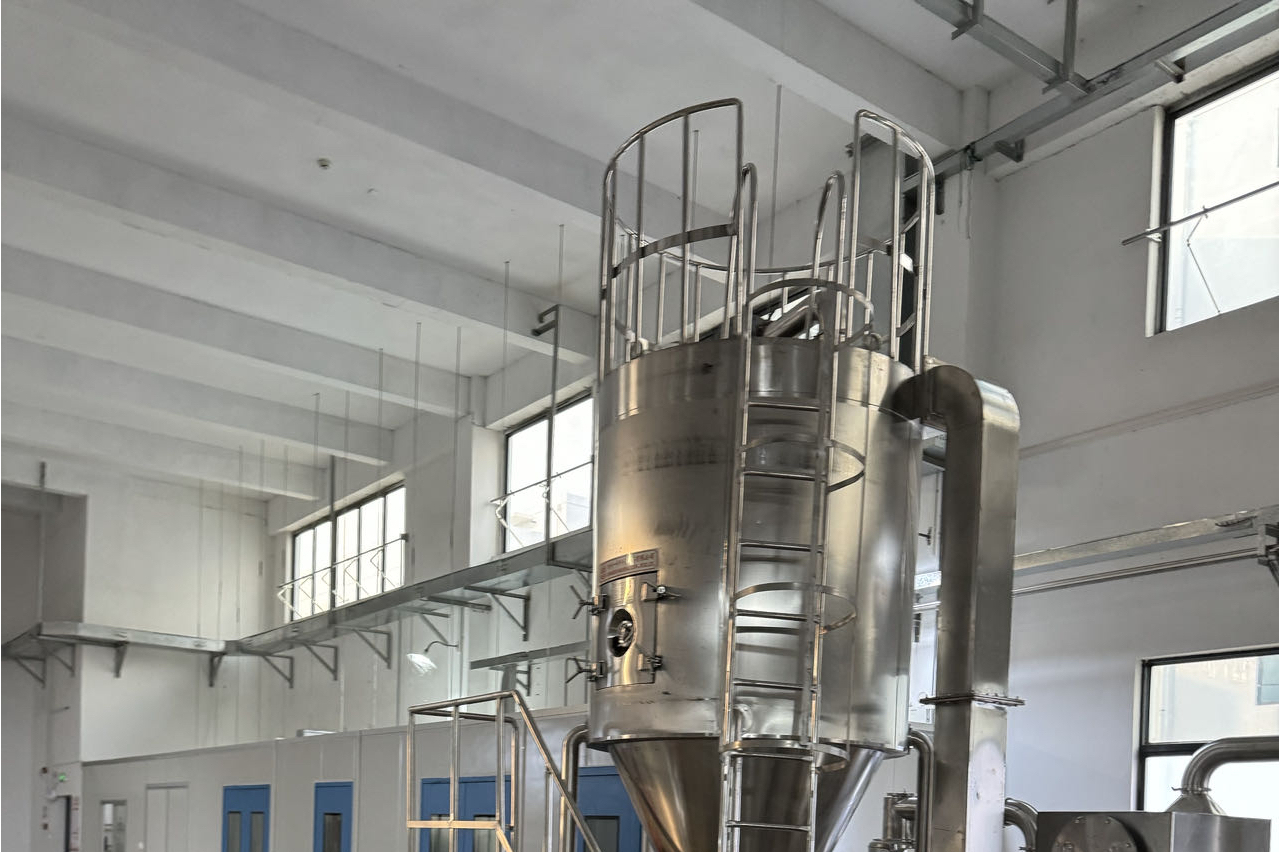
A spray dryer transforms a liquid into a dry powder by spraying it into a stream of hot air. You see this process in action when industries need to create products like milk powder or instant coffee quickly and efficiently. Many sectors rely on this technology, y compris:
Industrie chimique
Ceramics industry
When you learn how a spray dryer works, or spray dryer como funciona, you gain insight into why it remains essential for producing powders from liquids on a large scale.
Principaux à retenir
A spray dryer quickly turns liquids into dry powders by spraying them into hot air, making it essential for food, médecine, and chemical production.
The process includes preparing the liquid feed, atomizing it into tiny droplets, séchage à l'air chaud, evaporating moisture fast, and collecting the powder efficiently.
Controlling droplet size, drying temperature, and air flow helps produce powders with the right size, shape, and moisture, protecting sensitive ingredients.
Spray drying offers fast, cost-effective drying with consistent quality, but requires careful control to avoid issues like sticky powder or uneven drying.
This technology supports many products like milk powder, instant coffee, medicines, and detergents, making powders easy to store, transport, and use.
What Is a Spray Dryer?

Définition
A spray dryer is a machine that helps you turn a liquid into a dry powder in just a few seconds. You start with a liquid feed, such as a solution or slurry. The spray dryer uses a pump to move this liquid into an atomizer. The atomizer breaks the liquid into tiny droplets, creating a fine mist. These droplets enter a large chamber filled with hot air or gas, usually heated to temperatures between 200°C and 250°C. When the droplets meet the hot air, they dry almost instantly. The water or other liquid inside the droplets evaporates, leaving behind small, dry particles.
You will find several important parts in a spray dryer. These include an air heater, an atomizer (which can be a nozzle or a spinning disk), a drying chamber, and a system to collect the dry powder. Fans move the air through the system, and special filters or cyclones separate the powder from the air. The process creates powders with controlled size and shape, often between 1 et 50 micrometers. This control helps you get the exact type of powder you need for your product.
A spray dryer lets you produce dry powders quickly and with consistent quality, making it a key tool in many industries.
Purpose
You use a spray dryer when you need to turn a liquid into a powder efficiently. The main goals include:
Making fine powders from liquids in a single step.
Protecting heat-sensitive products from damage during drying.
Creating powders with uniform shape and porosity.
Spray drying works well for products that must stay stable and easy to handle, such as milk powder, instant coffee, or medicine. You can also use it for chemicals and advanced materials. The process helps you save time and energy, while giving you a product that meets strict quality standards. Spray drying remains popular because it gives you flexibility and control, no matter what industry you work in.
Spray Drying Process

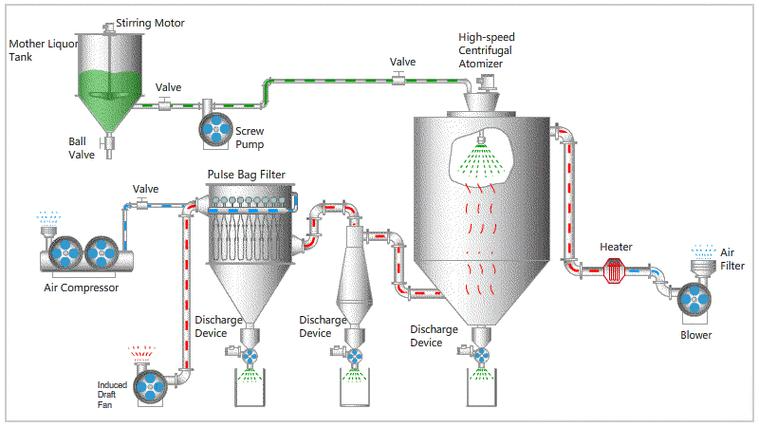
Spray drying is a fast and efficient way to turn a liquid into a dry powder. You can see how a spray dryer como funciona by following each step in the process. Each stage plays a key role in making sure you get a high-quality powder, especially when you work with heat-sensitive materials.
Preparation
You start the spray drying process by preparing the feed. The feed must be a liquid, such as a solution, suspension, or paste. You need to make sure the feed is homogeneous, pumpable, and free from impurities. Parfois, you concentrate the feed or filter it to remove contaminants and increase the solid content. This step helps you improve drying efficiency and ensures the feed is suitable for atomization.
Prepare the feed in liquid form.
Concentrate or filter the feed to increase solids and remove impurities.
Carrier agents in the feed help protect sensitive ingredients, such as flavors, huiles, probiotics, et vitamines, during drying.
Proper feed preparation gives you better powder quality and helps the spray dryer como funciona smoothly.
Atomisation
Suivant, you atomize the liquid feed. Atomization breaks the liquid into tiny droplets, creating a fine mist. This step is critical because droplet size affects how quickly the feed dries and what the final powder looks like. You can use different atomization methods, such as pressure nozzles, atomiseurs rotatifs, ultrasonic nozzles, or electrostatic atomization.
Droplet Size Distribution | Efficacité énergétique | Handles Viscous Liquids | |
|---|---|---|---|
Pressure Nozzles | Broad | Faible | Limité |
Rotary Atomizers | Broad | Medium | Bien |
Ultrasonic Nozzles | Narrow | Haut | Suitable |
Piezoelectric Nozzles | Narrow | Haut | Suitable |
Electrostatic | Narrow | Medium | Suitable |
Most droplets range from 5 à 20 micrometers in diameter, but the size can vary depending on the equipment and settings. Smaller droplets dry faster and help you protect heat-sensitive products.
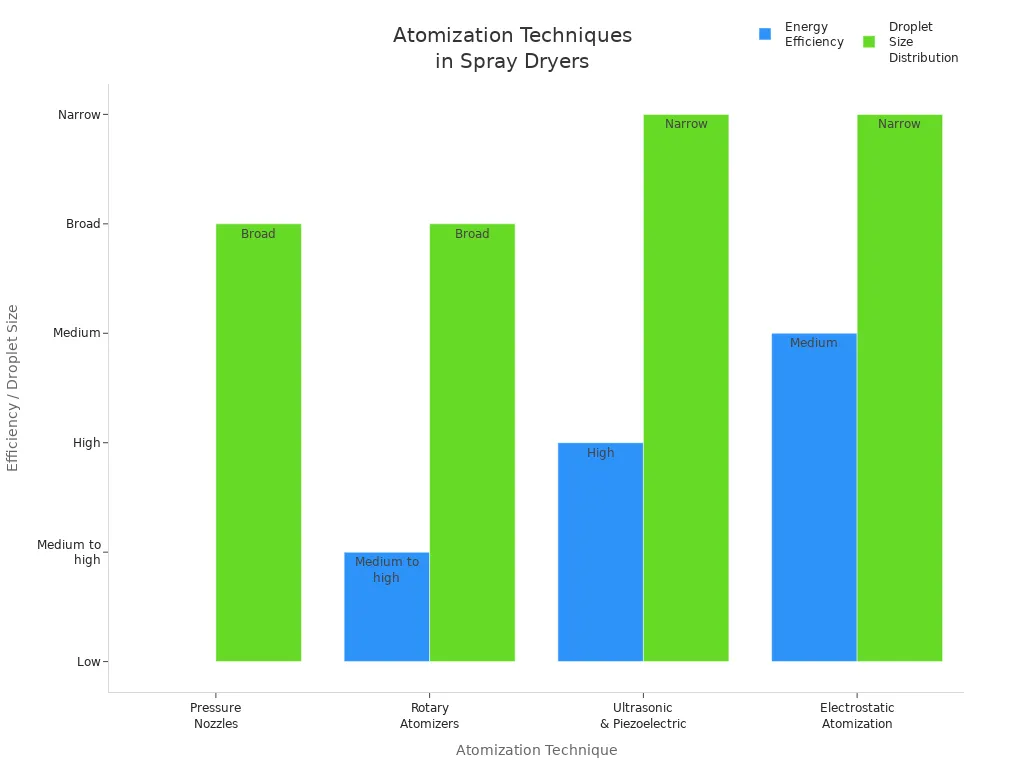
Chambre de séchage
After atomization, the droplets enter the drying chamber. Here, you introduce a stream of hot air or gas. Le temperature inside the chamber usually ranges from 105°C to 200°C, but you can use lower temperatures (down to 60°C) for vacuum systems. The airflow is carefully controlled, often at about 1.5 cubic meters per minute, and the temperature stays precise within ±1°C. This control helps you protect heat-sensitive materials from damage.
The hot air meets the droplets and starts the drying process. The design of the chamber ensures that the hottest air touches the wettest droplets first, which prevents overheating of already dried particles.
Evaporation
Inside the chamber, rapid evaporation takes place. The tiny droplets have a large surface area, so moisture evaporates quickly when they meet the hot air. This fast drying is important for products that can break down or lose quality if exposed to heat for too long.
Rapid evaporation shortens drying time and reduces heat exposure.
The process preserves the quality, biological activity, and nutritional value of sensitive ingredients.
Co-current airflow (where air and droplets move in the same direction) helps avoid overheating.
Quick evaporation is one reason why spray drying works so well for foods, medicines, and other delicate products.
Collection
Enfin, you collect the dry powder from the air. The most common collection methods are cyclone separators and bag filters.
Cyclone separators use centrifugal force to separate powder from the air.
Bag filters trap any remaining fine particles before releasing clean air.
Some systems recycle fine particles back into the drying chamber to control powder size and quality.
Collection Method | Description |
|---|---|
Uses centrifugal force to separate dried powder from the exhaust air; powder collects at the bottom. | |
Bag Filter | Removes remaining powder particles by passing exhaust air through filter bags, releasing clean air. |
Combination Use | Large spray dryers often use both cyclone separators and cloth bag filters for efficient powder collection. |
Fines Recycling | Fine particles separated by cyclones or bag filters can be recycled back into the drying chamber or fluid beds to control agglomeration and improve powder quality. |
You can expect to recover more than 80% of your product in the first batch, and with good process control, yields can reach over 90%. Some powder may stick to the chamber walls, but you can recover it with extra steps if needed.
The single-step nature of spray drying makes it efficient and reliable for large-scale production.
By understanding each stage, you see how spray dryer como funciona to turn liquids into powders quickly, safely, and with high quality.
spray dryer como funciona
Step-by-Step Overview
You can understand spray dryer como funciona by looking at each step in the process. Each stage plays a role in turning your liquid feed into a dry powder. Here is a clear, step-by-step overview:
Préparation des aliments: You start by preparing your liquid feed. Adjust the concentration, viscosity, and temperature so the feed matches the requirements for spray drying.
Atomisation: You use an atomizer to break the liquid into fine droplets. This step controls the size of the particles and how fast they dry.
Droplet-Air Contact: The droplets enter the drying chamber and meet hot air. This contact starts the heat and mass transfer needed for drying.
Moisture Evaporation: The hot air causes rapid evaporation of moisture from the droplets. The large surface area of each droplet helps speed up this process.
Particle Formation: As the moisture leaves, solids in the droplets form powder particles. These can be solid, hollow, or even porous, depending on your settings.
Particle Separation: The dried particles separate from the air using devices like cyclones or filters.
Product Collection: You collect the final powder. Parfois, you process it further by agglomerating or packaging it.
When you follow these steps, you see how spray dryer como funciona to create powders efficiently and with high quality.
Key Factors
Several key factors affect how well spray dryer como funciona in your operation. Paying attention to these points helps you get the best product quality and consistency:
Drying temperature, including the temperature of the air entering and leaving the chamber, has a big impact on your product’s quality.
Humidity in the drying gas changes the moisture left in your powder and can affect how the particles stick together.
Droplet size, which you control during atomization, decides the final particle size and quality.
Feed rate and changes in your feed’s properties can make your product more or less consistent.
Mechanical issues, such as nozzle leaks or damage, can change the spray pattern and cause problems with particle size.
The cyclone or filter you use for powder collection affects the size and quality of your powder, especially if you want fine or fragile particles.
Monitoring and control systems, like temperature and pressure sensors, help you keep the process stable and linked to product quality.
Real-time monitoring, such as measuring particle size during drying, lets you catch problems early and adjust quickly.
A risk-based approach helps you focus on the most important points for keeping your product consistent and high quality.
Conseil: You can improve your results by checking these factors often and using control systems to keep your spray dryer como funciona at its best.
Key Components
Atomizer
The atomizer is the heart of your spray dryer. It breaks your liquid feed into tiny droplets, which then dry into powder. You can choose from different types of atomizers, each with its own strengths. Le table below shows the main types and their advantages:
Type d'atomiseur | Avantage(s) |
|---|---|
Nozzle Atomizers | Produce smaller particle sizes |
Rotary Disk Atomizers | Suitable for handling thicker feeds |
When you adjust the atomizer speed, you control the size of the droplets. Higher speeds create smaller droplets. These smaller droplets dry faster and form powders with different shapes, like hollow or porous particles. If you slow down the atomizer, you get larger droplets, which dry more slowly and can change the texture of your powder. By changing the atomizer speed, you can fine-tune the final product’s size, shape, and density.
Conseil: Use the right atomizer and speed to match your product’s needs and get the best powder quality.
Chambre de séchage
The drying chamber is where your droplets meet hot air and turn into powder. You will find several designs, such as co-current, counter-current, and mixed-flow chambers. Most chambers have a tall, round body with a cone-shaped bottom. Le height-to-diameter ratio usually ranges from 1:1 à 5:1. Stainless steel is common for food and medicine, while special alloys work best for harsh chemicals. Inside, baffles and guides help air flow smoothly. Insulation, often 100 à 200 mm thick, keeps heat inside. Smooth surfaces make cleaning easier and prevent powder from sticking. You may also see features like explosion relief panels, sight glasses, and clean-in-place systems.
Note: Good chamber design helps you avoid powder sticking to the walls and keeps your product safe and dry.
Air System
Le air system controls the temperature and humidity inside your spray dryer. Dry air is important because high humidity can cause powder to stick and lower your yield. Dehumidifiers remove moisture from the air before it enters the chamber. Heaters then warm the air to the right temperature. Fans push and pull air through the system, keeping a steady flow and slight vacuum. You can adjust the air temperature or the feed rate to keep drying conditions stable. This careful control helps you make powder with the right moisture and texture every time.
Continuous dry air keeps drying fast and prevents clumping.
Proper air control extends the shelf life of your powder.
Collection System
After drying, you need to collect your powder. The most common systems are cyclone separators and bag filters. Cyclone separators spin the air, using centrifugal force to pull out the powder. They work well for fine particles and need little maintenance. Bag filters catch even smaller particles, making sure you do not lose valuable product. Both systems let clean air escape while keeping your powder safe. This setup helps you get a high yield and consistent powder quality.
Souviens-toi: Good collection systems help you save product and keep your spray dryer running smoothly.
Applications
Industrie alimentaire
You see spray drying used in many foods you eat every day. This process helps you turn liquids into powders quickly and safely. You can find spray-dried products in your kitchen and grocery store. Some common examples include:
Instant coffee
Milk powder
Infant formula
Food ingredients
Nutraceuticals
Vitamins
Séchage par pulvérisation removes moisture from food, which helps you store these powders for a long time without spoilage. You also get powders that dissolve easily in water, making them perfect for drinks and mixes. The process lets you control the size and shape of each particle, so you get smooth, free-flowing powders. You can protect sensitive nutrients and flavors because spray drying uses short bursts of heat. This means vitamins and probiotics stay active and fresh.
Conseil: Spray drying is ideal for foods that need a long shelf life and quick mixing, such as instant soups and drink powders.
Médicaments
You rely on spray drying to make many modern medicines. The process helps you create powders for tablets, capsules, and inhalers. You can use spray drying to improve how well your body absorbs certain drugs, especially those that do not dissolve easily in water. Here are some pharmaceutical products made with spray drying:
Amorphous solid dispersions for better drug absorption
Inhalable drugs like insulin powder
Microcapsules for controlled-release medicines
Taste-masked formulations
Spray drying protects heat-sensitive drugs by exposing them to heat for only a short time. You can also control the size and shape of the particles, which helps you make medicines that work faster and last longer. The process is fast and can be scaled up for large production, making it a favorite in the pharmaceutical industry.
Product Type | Why Use Spray Drying? |
|---|---|
Inhalable drugs | Gentle drying, precise particle control |
Controlled-release capsules | Consistent size, protects active ingredients |
Taste-masked tablets | Better flavor, improved patient experience |
Produits chimiques
You find spray drying in the chemical industry for making powders with special properties. This process helps you create products like:
Pigments
Catalysts
Pesticides
Spray drying gives you control over the size and shape of each particle. You can make powders that are uniform and easy to handle. For catalysts, spray drying creates porous particles, which increases their activity. The process also allows you to sterilize products using hot air, making them safer to use. You can produce large amounts of powder quickly, which helps you meet high demand in the chemical market.
Note: Spray drying is perfect for chemicals that need to stay stable, dissolve quickly, or have a specific particle size for their job.
Advantages and Challenges
Avantages
Spray drying offers you many advantages in industrial applications. You can dry liquids into powders quickly and efficiently. This method works well for large-scale production. You get consistent product quality and uniform particle size. Spray drying also helps you extend the shelf life of your products by removing moisture. You can use this process for food, médicaments, et produits chimiques.
Here is a comparison of common drying methods:
Méthode de séchage | Efficacité | Nutrient Retention | Consommation d'énergie | Coût |
|---|---|---|---|---|
Séchage par pulvérisation | Haut | Moderate | Moderate | Moderate |
Sèche | Faible | Haut | Haut | Haut |
Séchage à l'air | Moderate | Faible | Faible | Faible |
You will find spray drying more cost-effective than freeze drying. It uses less energy and takes less time. You can scale up production easily. Many industries choose spray drying because it balances speed, coût, et qualité du produit. You also benefit from improved operational efficiency and reduced waste. Modern spray dryers use energy-saving features, such as heat recovery, to lower costs even more.
Conseil: Spray drying helps you produce powders with controlled moisture and size, making your products easier to store, transport, and use.
Limites
Spray drying also comes with some défis. You must control the process carefully to avoid problems. If droplets do not dry fast enough, you may see sticky deposits on the chamber walls. Poor atomization can lead to uneven drying and lower product quality. Some materials, like high-molecular-weight polymers or very sticky feeds, do not work well in spray dryers.
Les défis courants incluent:
Fast drying is necessary to prevent wet powder from sticking.
Uniform atomization is required for efficient drying.
Small-scale spray dryers may not remove all solvents.
Some feeds cannot be atomized or may clog the system.
Products that melt at drying temperatures need special adjustments.
You may also face higher costs for energy, entretien, and cleaning. Operator training and regulatory compliance add to your expenses. In pharmaceuticals, limited facilities and expertise can slow down development. Sensitive products, such as biologics, need extra care to avoid damage during drying.
Note: You can overcome many limitations by choosing the right equipment, optimizing process settings, and training your team well.
You now understand how a spray dryer turns liquid into powder using atomization, hot air, and careful collection. Spray dryers help you make food, médecine, and chemicals safely and efficiently. When you choose a spray dryer, you should:
1. Define your product needs and material type. 2. Check drying efficiency and particle size control. 3. Plan for future growth and easy cleaning.
New trends like AI and eco-friendly designs will shape the future of spray drying. For complex projects, you may want to talk with an expert or explore more resources.
FAQ
What products can you make with a spray dryer?
You can make milk powder, instant coffee, baby formula, powdered eggs, medicines, détergents, and even some chemicals. Spray dryers help you turn many liquids into dry powders for easy storage and transport.
How do you clean a spray dryer?
You clean a spray dryer by flushing it with water or special cleaning solutions. Some machines have automatic cleaning systems. You must remove all powder and residue to keep your products safe and high quality.
Why does particle size matter in spray drying?
Particle size affects how your powder dissolves, flows, and stores. Smaller particles dissolve faster. Larger ones may flow better. You control size by changing the atomizer settings and feed properties.
Is spray drying safe for heat-sensitive products?
Oui! Spray drying uses short bursts of heat. This quick process protects vitamins, les saveurs, and medicines from damage. You can safely dry many sensitive ingredients without losing quality.


